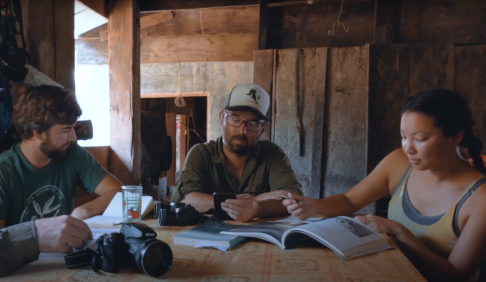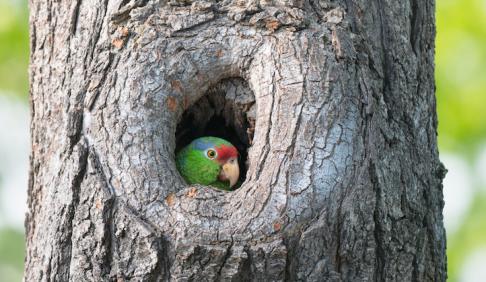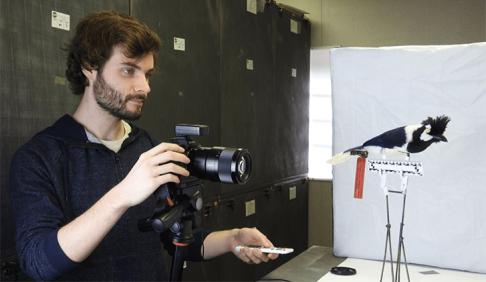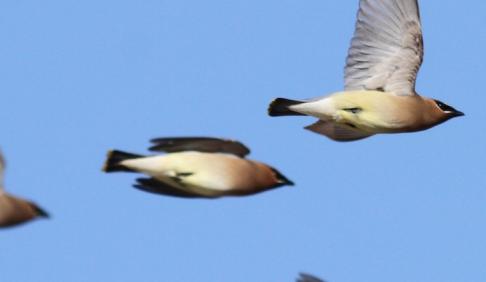
In the 1930s, Robert T. Moore—explorer, poet, and ornithologist—set out to describe the birds of Mexico. By 1955, his trusted field hand Chester C. Lamb had collected 39,000 specimens from over 300 locations. After Moore died, the collection remained preserved, its wealth of knowledge waiting to be examined. Meanwhile, the habitats Lamb visited were forever altered. In 2017, the Moore Lab began revisiting Lamb’s site to see how human impacts changed the landscape and its birdlife.

Flocks of parrots are now a regular sight in Los Angeles, but it was not always this way. Parrots were brought to the city as pets starting in the late 1800s. Some escaped, others were released. By the 1960s, wild populations of a few species were established and began to grow. FLAPP uses community science and DNA to understand how our new parrot neighbors are interacting and evolving in their urban habitat.

Natural history collections are vital sources of knowledge about biodiversity, but their information is often difficult to access. Our oBird project seeks to bring museum specimens to the public and research community through 3D modeling.

The spectacle of spring bird migration is on full display at Bear Divide in the western San Gabriel Mountains. Led by Dr. Ryan Terrill, the Moore Lab is counting thousands of birds each spring morning as they pass over a low saddle in the mountains on their way north. The Pacific Coast has lacked a place to monitor diurnal bird migration similar to well-known East Coast migration hotspots like Cape May. The data we collect will help us understand how well birds are doing as they respond to changing habitats and climates.
Judy et al. 2025. Speciation with gene flow in an island endemic hummingbird. PNAS Nexus 4: pgaf095
Turbek et al. 2025. Genetic analysis of museum samples suggests temporal stability in the Mexican nonbreeding distribution of a neotropical migrant. Journal of Avian Biology: e03369
Campbell et al. 2024. Exceptional plumage of a female Anna's hummingbird in Los Angeles. Western Birds 55:226–230
Ramirez et al. 2024. Convergent niche shifts of endangered parrots (genus Amazona) during successful establishment in urban southern California. Diversity and Distributions 30: e13817
Hong & Claramunt. 2025. Morphological adaptations for migration in North American wood-warblers (Aves: Parulidae). Journal of Ornithology
Salter et al. 2024. An island ‘endemic’ born out of hybridization between introduced lineages. Molecular Ecology 33: e16990
Rego et al. 2024. Subspecies‐level distribution maps for birds of the Amazon basin and adjacent areas. Journal of Biogeography 51: 14-28
Tobias et al. 2022. AVONET: morphological, ecological and geographical data for all birds. Ecology Letters 25: 581-597
Beltrán et al. 2021. Speciation rates are positively correlated with the rate of plumage color evolution in hummingbirds. Evolution 75: 1665-1680
Digitization PEN: oBird: 3D Photogrammetry of Museum Specimens for Phenomics across the Avian Tree of Life (DBI-2001652) | Abstract
MRI: Launching an Undergraduate-driven Genomics Center through Acquisition of an Illumina MiSeq (DBI-1828738) | Abstract
CAREER: Integrating Undergraduate Research, Citizen Science, and Museum Genomics to Explore a Century of Change in North American Birds (DEB-1652979) | Abstract
RUI: CSBR: Natural History: Securing and Digitizing the World’s Largest Mexican Bird Collection (DBI-1349179) | Abstract
RUI: Collaborative Proposal: Genomic Approaches to Comparative Phylogeography in a Biodiversity Hotspot (DEB-1258205) | Abstract
EAGER: RUI: The Genomic Architecture of Speciation in an Avian Hybrid Zone (DEB-1244739) | Abstract